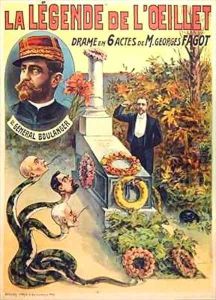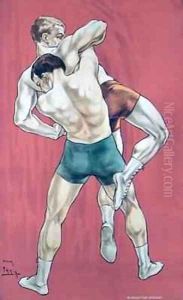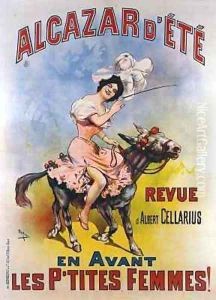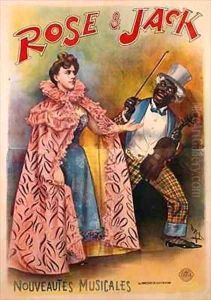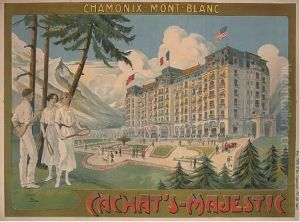Candido Aragonez de Faria Paintings
Cândido Aragonez de Faria, born on August 16, 1849, in Mariana, Brazil, was a notable Brazilian painter, caricaturist, and decorator known primarily for his work in France. Faria showed an early talent for the arts and pursued his passions with vigor. In 1875, he moved to Paris to advance his studies and immerse himself in the vibrant European art scene.
In Paris, Faria honed his skills and embraced the artistic movements of the time. He studied at the École des Beaux-Arts under the tutelage of Alexandre Cabanel, a prominent French painter of the era. Faria's work was heavily influenced by the academic painting style prevalent in the 19th century, characterized by its focus on classical subjects, precise technique, and formal composition.
Faria achieved recognition for his historical and mythological paintings, but he was also a pioneer in the field of caricature in Brazil. He contributed to several periodicals, including 'L'Illustration' and the Brazilian magazine 'O Mequetrefe'. His caricatures were known for their wit and incisive social commentary, reflecting the artist's keen observation and critical perspective on society.
His decorative work was also significant, and he was responsible for the curtains of the São Pedro de Alcântara Theater in Rio de Janeiro and the Municipal Theater of São Paulo, projects that showcased his versatility and command of large-scale compositions.
Despite spending much of his career in France, Faria maintained strong ties to Brazil. His work was presented in several exhibitions and received accolades in both countries. His art was a bridge between the European traditions he had embraced and the Brazilian culture he represented, and his legacy is remembered as a testament to this cultural exchange.
Cândido Aragonez de Faria passed away on June 13, 1911, in Paris, but his art remains a significant part of Brazil's cultural heritage and the broader narrative of 19th-century academic art.
